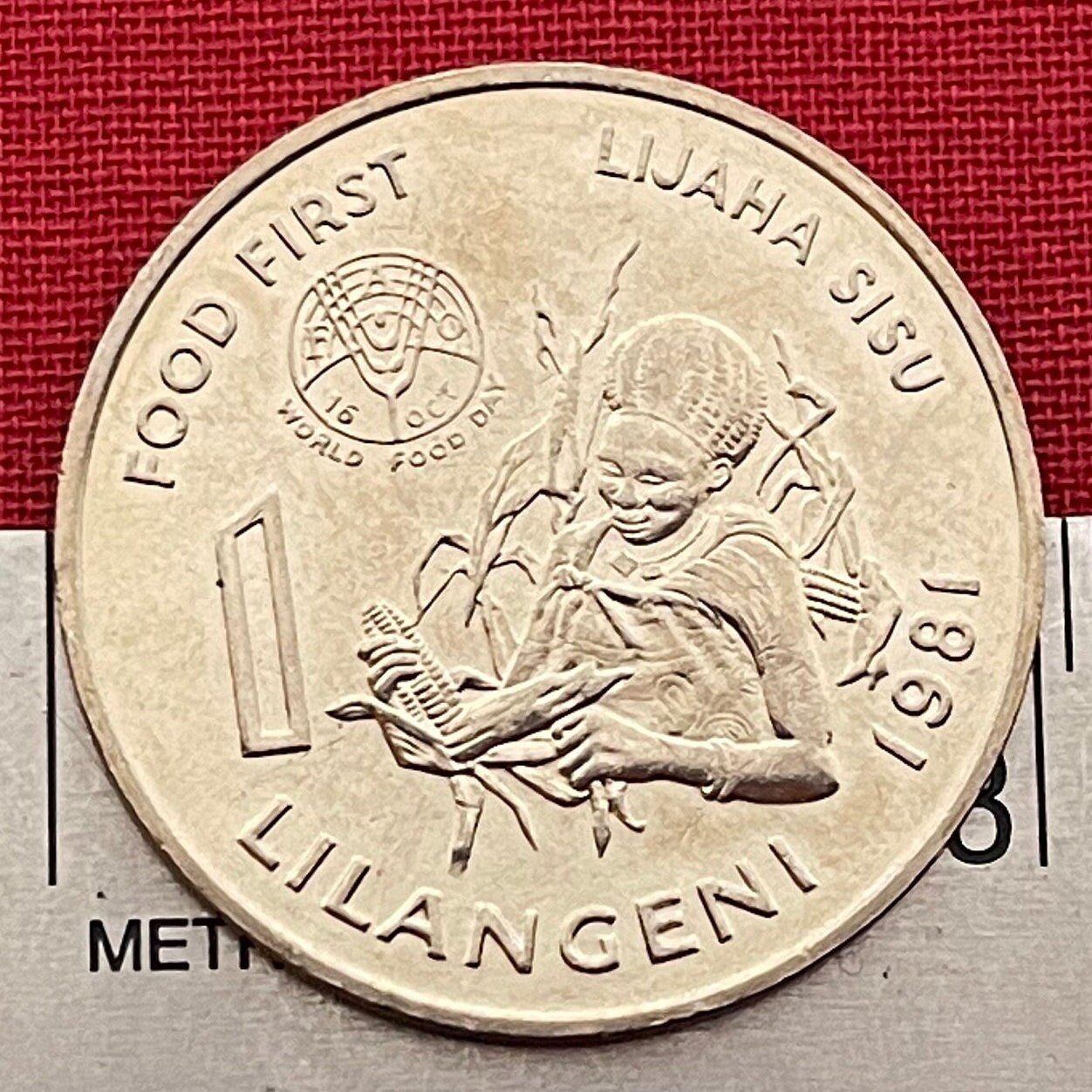elemintalshop
Woman with Beehive Sicolo Hairdo, Husking Corn & King Sobhuza 1 Lilangeni Swaziland Authentic Coin Money for Jewelry (1981) (Eswatini) Maize
Woman with Beehive Sicolo Hairdo, Husking Corn & King Sobhuza 1 Lilangeni Swaziland Authentic Coin Money for Jewelry (1981) (Eswatini) Maize
Couldn't load pickup availability
Woman with Beehive Sicolo Hairdo, Husking Corn & King Sobhuza 1 Lilangeni Swaziland Authentic Coin Money for Jewelry and Craft Making (Longest Reigning Monarch) (1981) (Thousand Grandchildren) (Bull of Swazi) (Eswatini) (Food FIrst) (Maize)
Commemorative issue
World Food Day: 16 October 1981
Reverse: Woman with traditional "sicolo" beehive hairdo, husking corn.
Logo of Food & Agriculture Organisation, with logo lettering: FAO - World Food Day: 16 Oct.
Lettering: FOOD FIRST
LIJAHA SISU
1 LILANGENI
1981
Obverse: King Sobhuza II
Lettering: SWAZILAND
Features
Issuer Eswatini
King Sobhuza II (1968-1982)
Type Circulating commemorative coin
Year 1981
Value 1 Lilangeni (1 SZL)
Currency Lilangeni (1974-date)
Composition Copper-nickel
Weight 11.65 g
Diameter 30 mm
Thickness 2.2 mm
Shape Round
Orientation Medal alignment ↑↑
Demonetized 02-01-2016
Number N# 2338
References KM# 32
The Food of eSwatini
The eSwatini diet is based on tinhlavu (grains) and tibhidvo (vegetables). Inyama (meat) dishes are reserved for special occasions when dishes such as goat stew, roast leg of goat, or stuffed or roast free-range chicken are served. “Mealies,” a porridge made of maize or sorghum, is the staple. The often bland porridge is served along with spiced stews made with vegetables and leafy greens. Pumpkin, green beans, corn, spinach, beets, rice, and sweet potatoes are frequently used ingredients. Fruits that are readily available are mango, guava, paw-paw, banana, pineapple, sugar cane, and avocado.
Some of the popular dishes are emasi (sour milk) a fermented milk delicacy where raw milk from cows is fermented and strained, corn on the cob (roasted or boiled), Umncweba and umkhunsu (dried spiced meat, akin to jerky). Typical dishes are sishwala, a thick porridge served with meat or vegetable stew; incwancwa, a sour porridge made with fermented mealie meal; umbidvo wetintsanga, pumpkin leaves cooked with groundnuts; sidvudvu, a porridge made of pumpkin mixed with mealie meal, and tjwala, traditional beer.
The liSwati Way of Life
Some observers note that some cultural traditions in eSwatini have survived and thrive despite the rapid modernization observed in other parts of this continent. Men and women still dress in the same colorful robes of the style their ancestors wore. Women often wear their hair in the “beehive” do and men bear the traditional axes.
Source: https://togetherwomenrise.org/customsandcuisine/customs-and-cuisine-of-the-kingdom-of-eswatini-formerly-swaziland/
*********
Wikipedia:
Sobhuza II, KBE (Swazi: [sɔbʱuzʱa]; also known as Nkhotfotjeni, Mona: 22 July 1899 – 21 August 1982) was the Paramount Chief and later Ngwenyama of Swaziland for 82 years and 254 days, the longest verifiable reign of any monarch in recorded history. Sobhuza was born on 22 July 1899 at Zombodze Royal Residence, the son of Inkhosikati Lomawa Ndwandwe and King Ngwane V. When he was only four months old, his father died suddenly while dancing incwala. Sobhuza was chosen king soon after that and his grandmother Labotsibeni and his uncle Prince Malunge led the Swazi nation until his maturity in 1921. Sobhuza led Swaziland through independence until his death in 1982. He was succeeded by Mswati III, his young son with Inkhosikati Ntfombi Tfwala, who was crowned in 1986.
Family and succession
Known by the honorific "Bull of Swazi" by virtue of his numerous progeny, King Sobhuza continued the tribal practice of maintaining many consorts. According to the Swaziland National Trust Commission, King Sobhuza II had 70 wives, who gave him 210 children between 1920 and 1970. About 180 children survived infancy, and 97 sons and daughters were reported living as of 2000. At his death he had more than 1,000 grandchildren.
Share



















